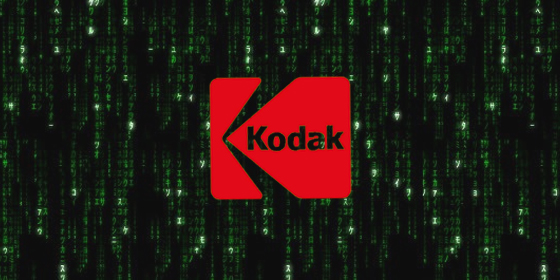The news that Kodak is preparing for bankruptcy protection signals another chapter in the death of celluloid.
It was one of the most iconic companies and brands in the world, synonymous with the photographic image, but in recent years profits have declined and costs risen.
Once a hub of innovation that attracted America’s most talented engineers, it was essentially the Apple or Google of its day.
But in the digital era processing film stock is a much more expensive business than manufacturing SD cards.
Last November, Kodak said that it might not even survive 2012 if it couldn’t secure $500 million in new debt or sell their digital imaging-patents, rumoured to be worth between $2bn and $3bn.
In a report for the Wall Street Journal, Mike Spector and Dana Mattioli describe the current situation:
The 131-year-old company is still making last-ditch efforts to sell off some of its patent portfolio and could avoid Chapter 11 if it succeeds, one of the people said. But the company has started making preparations for a filing in case those efforts fail, including talking to banks about some $1 billion in financing to keep it afloat during bankruptcy proceedings, the people said.
A filing could come as soon as this month or early February, one of the people familiar with the matter said. Kodak would continue to pay its bills and operate normally while under bankruptcy protection, the people said. But the company’s focus would then be the sale of some 1,100 patents through a court-supervised auction, the people said.
The reversal is a notable one, especially as Kodak invented the modern digital camera in 1975.
In this interview Steven Sasson describes how he invented the camera in the midst of an era that was decidely analogue.
Inventor Portrait: Steven Sasson from David Friedman on Vimeo.
But like Xerox – which failed to capitalise on essentially inventing the modern computer interface – the company declined to build upon this innovation, presumably because it was seen as a threat to the then core business of film processing.
Gradually over the last decade their efforts to diversify into printers were also hit by the rise of digital images being stored on devices (like smartphones) and the web (through sites like Flickr and Facebook).
But where does this leave the motion picture business?
Projection on celluloid is effectively going to be over by the end of 2013, but how long has film-based capture got?
Kodak and Fuji are the two primary celluloid manufacturers who supply the actual film stock from which most major movies are still made.
Although the past year has seen many notable productions (e.g. The Girl with the Dragon Tattoo) shoot digitally, there still is a reluctance amongst some cinemtographers to go fully digital.
Kodak’s No Compromise campaign over the last few years has been bullish about the merits of film based capture as opposed to digital.
Rob Hummel spoke at the Cine Gear Expo earlier this year and described why film was still a superior medium for capturing images.
But if Kodak don’t stave off bankruptcy, then who will actually make the stock on which movies are shot?
One wildcard suggestion was that noted film adherent Steven Spielberg could buy the company:
Spielberg could buy Kodak, then ensure that 35mm prints will always be available for screening 35mm movies. Totally serious suggestion.
— The Mutiny Company (@MutinyCo) December 30, 2011
Whilst I think this is highly unlikely, there are people who want to help Kodak anyway they can.
On the recent audio commentary for his film The American, director Anton Corbijn stated that he wants to support Kodak as long as they are still going because Tri-X film was the still the gold standard for stills photography.
The late Sydney Pollack once said that Stanley Kubrick used to give him Kodak Tri-X film to use for taking still pictures.
At the aforementioned Cinema Expo, cinematographer John Bailey highlighted the future archival problems of movies that are ‘born digitally’:
When it comes to cinema, perhaps Kodak could spin off its motion picture arm?
Despite the march of digital pioneers like David Fincher and James Cameron, I suspect that a large portion of cinematographers still want to use film.
If Kodak goes into bankruptcy does photochemical filmmaking as we know it just die?
> WSJ report on Kodak’s financial troubles
> More on Kodak at Wikipedia
> From Celluloid to Digital
